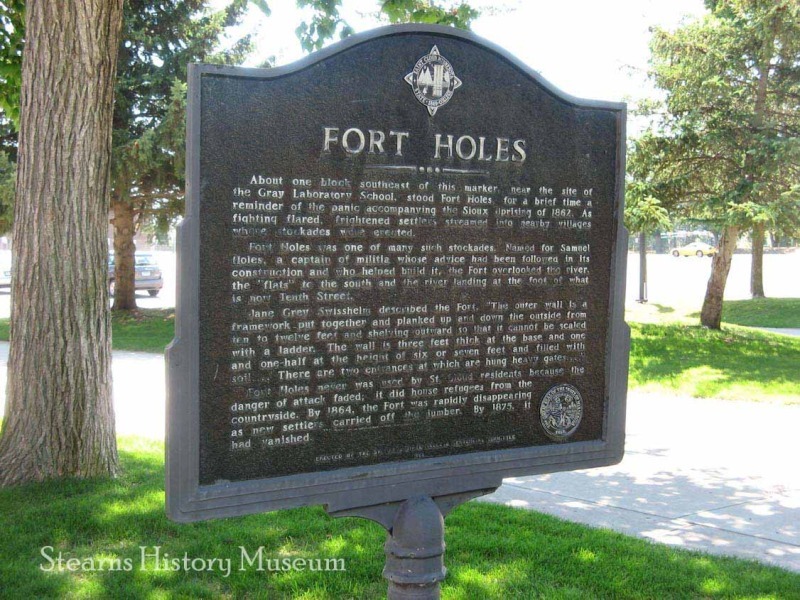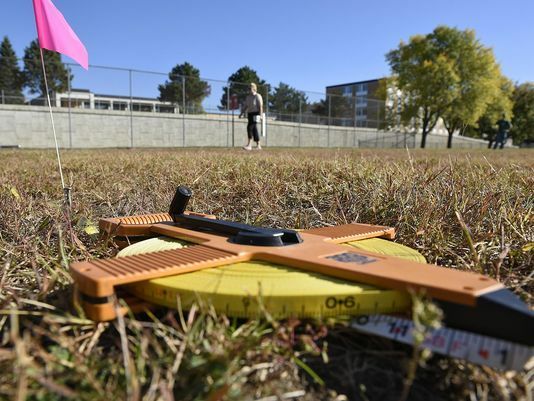Fort Holes
St. Cloud was the central transportation hub between St. Paul’s Fort Snelling and the Grand Forks area; important for its for supplies, immigrants, and soldiers. The city was frequently passed though with wagons of supplies and annuities for the Dakota after treaty signings. When supply wagons were delayed, the Dakota could not get the resources they needed to survive which lead to a time of great hardship and tension in the region. In August of 1862, war broke out between the Dakota and the United States. White settlers around the state feared that this violence would impact their communities. At this time, Minnesota saw the development of forts throughout the region by panicing settlers. Fort Holes was created as a shelter for settlers in the event of turmoil reaching them. No direct attacks or battles ever occurred in Stearns County or St. Cloud, where the fort was located (US Dakota War 1862, 2012). Samuel Holes and his family were one of only few families that stayed back before the war in 1862. When looking for a place to shelter during the war, the Koutz family, among other refugees, ended up in St. Cloud. Holes and a group of Scandinavian immigrants worked on building this stockade.
Fort Holes is architecturally described as “circular with concentric walls 4 feet apart filled in with earth. The whole space was floored over with heavy beams and planks covered with sod. On top was erected a bullet-proof tower, also circular and loopholed for 12 sharpshooters.” (Folwell, 1924, p. 161). The fort was not designed to be used as a refugee camp, but it did house many refugees from more isolated areas. “On September 11, 1862, citizens of Saint Cloud had built Fort Holes, a circular structure protected by 2 sets of walls and roofed with sod to protect it from fire. The fort was built large enough to house all the women and children in the town." (Hoffert) SCSU Anthropology Professor Rob Mann wondered about any possible remains where Fort Holes once stood. He recieved a grant to start searching for evidence of the structure with several SCSU graduate students.
For more information on the archeology around Fort Holes: Link to podcast.
References
Folwell, W. W. (1924). A history of Minnesota (Vols. 1-4). Saint Paul, MN: Minnesota Hstorical Society.
Hoffert, S. D. (1998). Gender and Vigilantism on the Minnesota Frontier: Jane Grey Swisshelm and the U. S.-Dakota Conflict of 1862, Western Historical Quarterly, Volume 29, Issue 3, 1 August 1998, Pages 342–362, https://doi.org/10.2307/970578
US Dakota War 1862. (2012). Retrieved from http://www.usdakotawarmncountybycounty.com/county/stearns-county-us-dakota-war.pdf



